Want more traffic, users and sales in 2022?
This list of content marketing tips will help.
It includes foundational tactics everyone should use. As well as advanced techniques you probably haven’t seen before.
Read on.
Contents
1. Unearth Your Content Goldmine
2. Build a Content Marketing Funnel
3. Add Fuel to the Fire with Paid Ads
5. For SEO, Focus on Search Intent
7. For Annual Guides and Reports, Re-Use The Same URL
10. Land and Expand
11. Save Time with These Tools
13. Tweet When Your Actual Followers Are Active
14. Give Every Blog Post 3 Different Titles
15. Post Content Summaries on Reddit
17. Aim for Relevance Over Reach
18. Draft 10 Headline Ideas for Each Piece of Content
22. Uncover Hidden Opportunities with Google Analytics
24. Write for “F-Shaped” Reading
1. Unearth Your Content Goldmine
If you have old content on your site, you could be sitting on a goldmine.
Content decays: it brings in less and less traffic over time. But with a few tweaks, you can bring it back to life.
The tricky part is finding which content needs a fresh coat of paint.
Luckily, the free tool Animalz Revive makes it easy.
Animalz Revive uses your Google Analytics data to find which articles aren’t bringing in as much traffic as they used to.
The tool starts by asking for your email address.

After that, it will prompt you to give it access to your Google Analytics. (You can revoke access later if you want.)
Finally, the tool will show you a list of articles that have lost traffic in the past year.

Scroll down below that report for some tips on bringing that traffic back.
Things like:
- Updating dates
- Shortening introductions
- Making sure the content itself is still accurate
And just generally improving the quality of the piece.
After refreshing the article, you can re-promote it to your email list and social media followers.
2. Build a Content Marketing Funnel
To turn your content into actual business results, you need one thing: a content marketing funnel.
In other words, several pieces of content that work together to:
- Attract visitors,
- Convert those visitors into subscribers, users or leads,
- Then sell them your product or service.
You can do that using the AIDA persuasion framework:
Awareness >> Interest >> Desire >> Action.
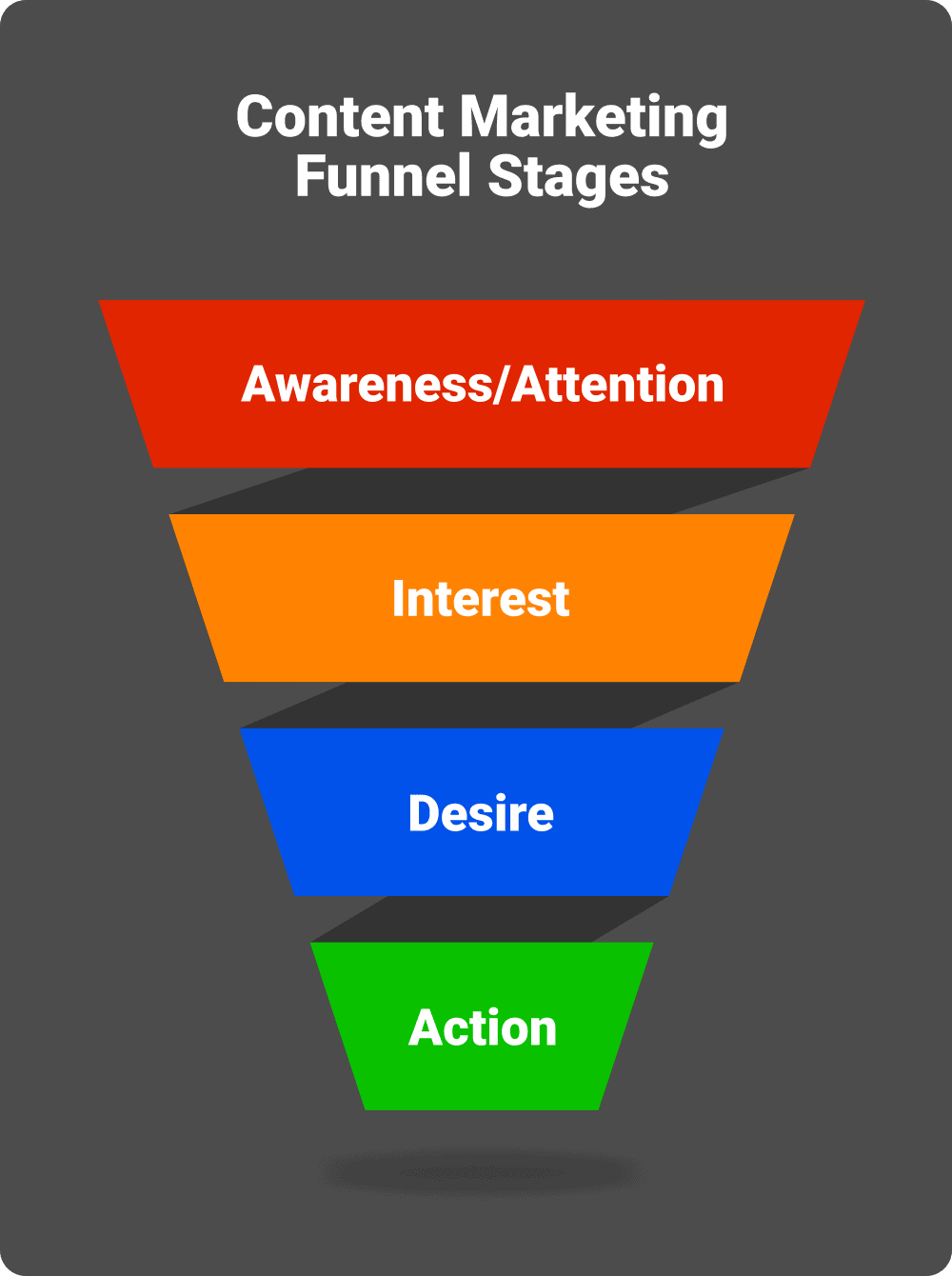
Here’s a basic example of a content marketing funnel:
- Instagram Stories with cooking tips, each with a “swipe up” link to access the recipe.
- Then, a recipe landing page with an email subscription form.
- Finally, a 5-part email sequence that sells a cooking course to subscribers.
Notice how each piece of content leads to the next piece, until ultimately making the sale.
A well-thought-out marketing funnel is the cornerstone of any successful content strategy.
3. Add Fuel to the Fire with Paid Ads
Once you have a decent content marketing funnel, you can juice your results with paid advertising.
There are two great ways to do it.
The first way is to get more people into the top of your funnel.
That’s what HubSpot is doing with this Facebook ad:

When someone clicks on that ad, they get sent to this page of free PDF downloads.
And if they want to download one, they need to sign up for HubSpot’s email list.
So that’s an example of using advertising to bring more people into the top of your funnel.
Easy peasy.
The other way to use paid ads with your content marketing is toward the bottom of your funnel.
Specifically by using retargeting.
With retargeting, you can reach the people who were almost ready to make a purchase, but decided not to.
Often, they just need a little bit more of a nudge. In which case, a discount or bonus offer can help. Or a free trial.
Other times, they might need a little more convincing. In that case, you may want to point them at an excellent case study or customer success story.
Tip: to see what ads your competitors are running, check out the Facebook Ad Library and type in their brand name. Or use a tool like Semrush to see their search ads.
4. Use “Viral Teasers”
It’s surprising how many businesses share their content with simple, boring descriptions.
“Our new video covers the difference between product A and product B. Check it out here.”
Yawn.
That may be the fastest way to share your content. But it’s hard to get people interested that way.
The next time you share a new piece of content, try taking a few extra minutes to create what I call a “Viral Teaser”.
To create a Viral Teaser, just take an important piece of your original content and include it in your social media post itself. That way, the people who don’t click through to your original content will still get value out of your social post.
Which will make them want to comment and share the post.
Let’s look at an example.
Which of these would you be more likely to retweet?
This tweet, which just includes a description of the article it’s pointing to:

Or this Viral Teaser tweet, which calls out some top takeaways from the article right there:
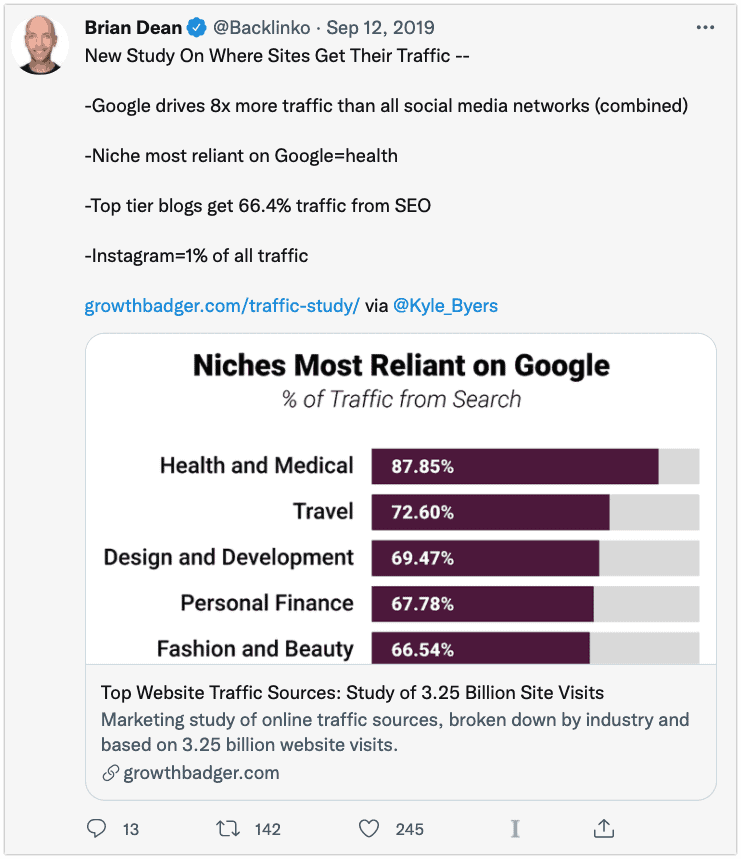
Obviously, the Viral Teaser version is better.
Pound for pound, Viral Teasers always lead to more engagement vs. more basic, descriptive social posts.
And they don’t have to be text-only.
For example, this excerpt of a video interview by Nathan Barry is a Viral Teaser. The clip itself is interesting enough to stand alone. But it makes you want to go watch the full video.
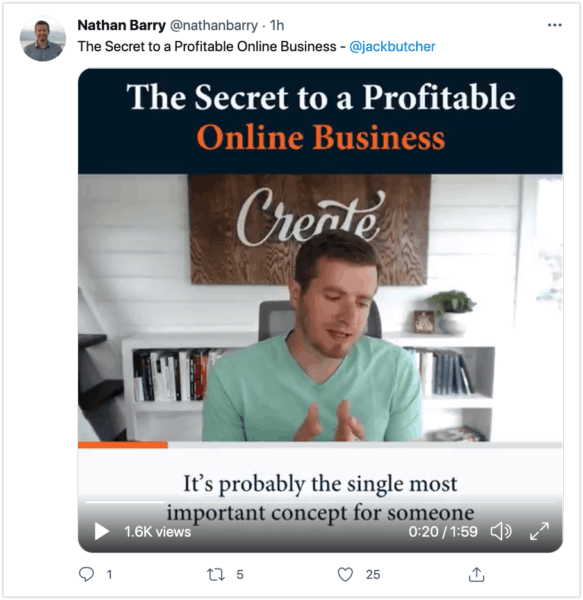
Once you start using Viral Teasers, you’ll never go back to sharing content with basic descriptions again.
5. For SEO, Focus on Search Intent
You can think of “search intent” as the reason people are searching Google for a given keyword.
It’s the answer to the question:
What are they actually looking for?
Search intent (or user intent) affects SEO rankings a lot more than it used to. In fact, Google now says that understanding intent is “a critical aspect of Search.”
Sometimes the search intent is obvious. Like for the keyword “Amazon Prime membership”: you know what they need and what they want to see.
But what about a keyword like “best restaurant in Portland”?
Would someone Googling that keyword like to see the homepages of individual restaurants? A local newspaper’s award for the best restaurant? Or maybe a long list of a lot of potential “best” restaurants?
(And which Portland do they mean, anyway?)
If you want your content to rank for that keyword, you have to know the answers to those questions.
Luckily, all you have to do is Google the keyword.
Here’s the search results page:
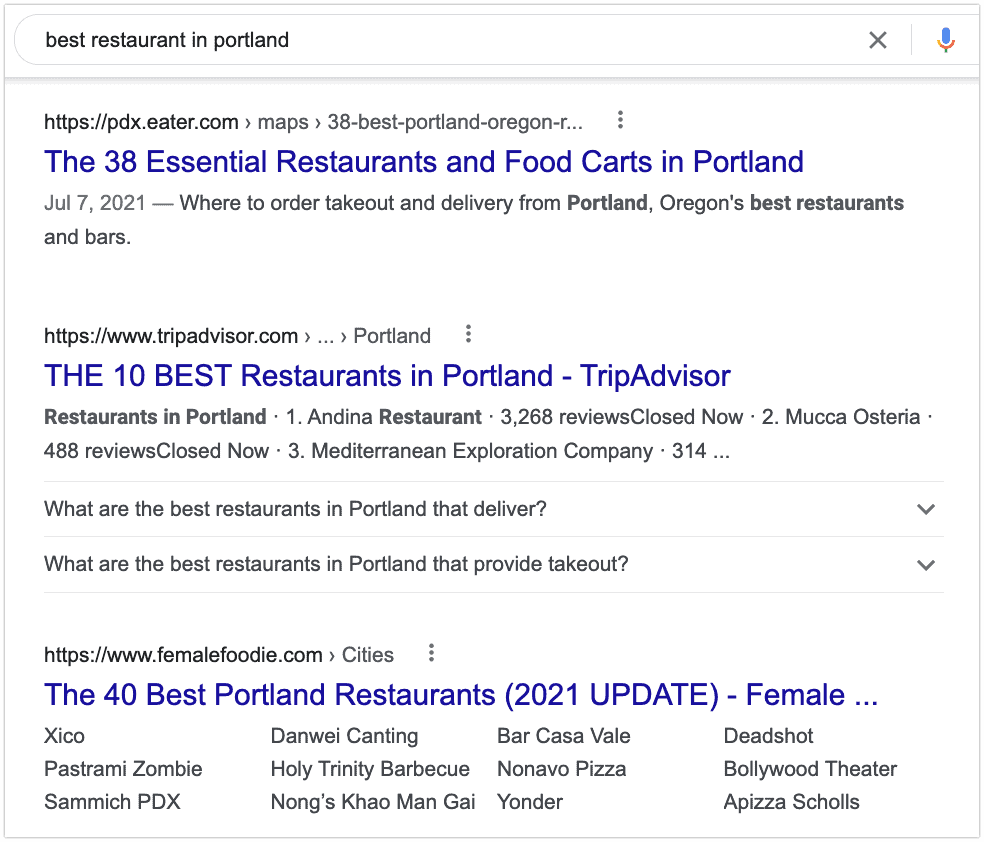
Just from looking at that page, you know what kind of content Google thinks people want for that keyword.
Specifically, Google is favoring articles that:
- Focus on Portland, Oregon (not Maine)
- Cover at least 10 of the best restaurants there
- And have a little mini-review or description of each restaurant (which you can see if you click through to look at each article)
Going even deeper, there’s a lot of overlap between these lists.
If you wrote a similar piece of content, you wouldn’t want to copy the other articles. But it would be a good idea to include any restaurants that are shared between them.
A tool like Frase or Surfer can help you find those commonalities. Or you can do it manually.
And that’s search intent in a nutshell.
6. Create Data-Driven Content
“Data-driven content” basically means a study or piece of original research that you put together to draw new conclusions.
And this type of content is an absolute magnet for backlinks.
Aside from the homepage, the three most-linked pages on GrowthBadger are all data-driven content:

Those studies have earned me coverage and links from big sites like Forbes, Mashable, Crunchbase and Moz.
Why does data-driven content work so well?
Journalists need numbers to back up their arguments.
Bloggers love the insights original research can provide.
And who doesn’t like learning new things?
But my favorite thing about this kind of content is that it can benefit your entire site.
According to Google’s John Mueller, even just one single link from an authoritative, relevant source can make all the difference in how Google values your site.
Here are three ways you can create data-driven content.
1. Run a survey.
This is how I put together my blogging study that attracted over 650 backlinks. It’s also how the Tradeoffs video series measures customer satisfaction of different SaaS products. Start with the insights you’re hoping to get, and work backwards to write your survey questions.
2. Use existing data.
Some businesses naturally generate all sorts of interesting data. In which case, all you need to do is publish it. That’s what Ahrefs did for this piece, for example.
But alternatively, there’s lots of public data out there that’s just waiting to be packaged up into a nice piece of content. Like this report on famous writers’ sleep habits compared to how much work they published. Or my report on top websites’ traffic sources. Or just about any article on The Pudding or Chartr.
3. Create an experiment.
Running an experiment doesn’t have to be complicated.
Here’s one that Neville Medhora did on choosing the right profile picture. Or check out my experiment on which domain extension is best.
(Tip: Amazon Mechanical Turk is a great tool for running experiments.)
7. For Annual Guides and Reports, Re-Use The Same URL
Here’s a riddle.
If this HubSpot report is from 2021…
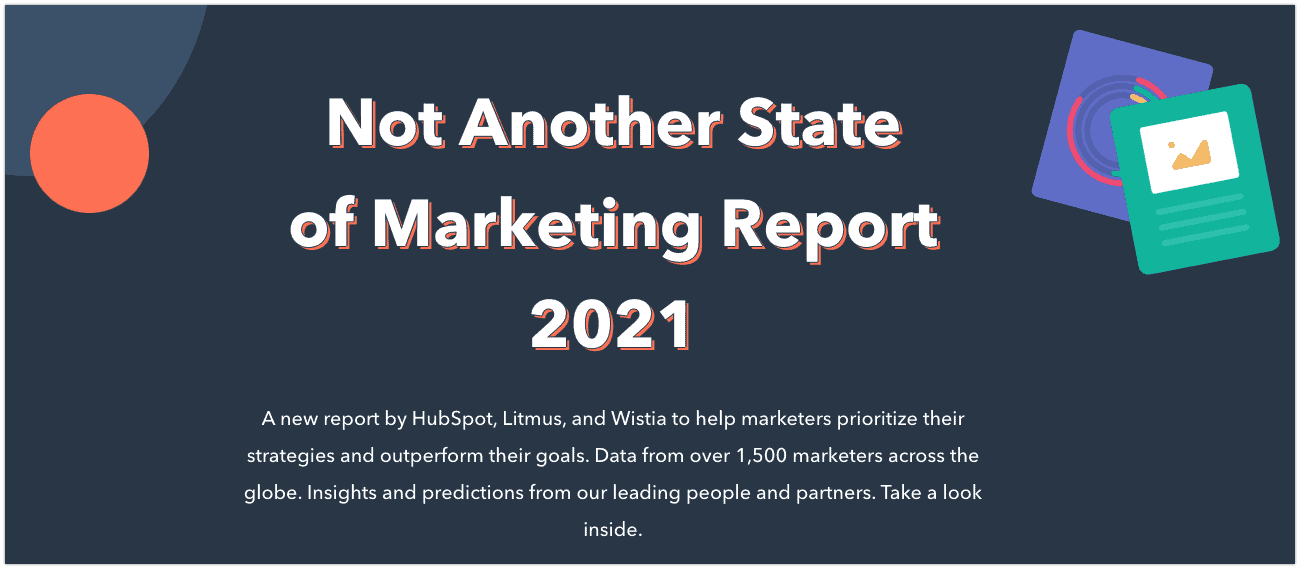
…then why does it have tens of thousands of links from 2020, 2019 and earlier?
Answer:
Because HubSpot re-uses the same URL for each year’s new report.
Thanks to this technique, HubSpot’s 2021 marketing report has an incredible 34,700 backlinks from over 7,000 different domains.

Let’s compare that to the standard approach: using a different URL for each yearly report.
That’s how Stack Overflow publishes their annual developer surveys.

For example, the 2021 Stack Overflow Developer Survey is published at insights.stackoverflow.com/survey/2021.
While their 2015 Developer Survey is at a different URL, insights.stackoverflow.com/survey/2015.
As a result, Stack Overflow only has 3.64k backlinks pointing to its 2021 report. (That’s still an impressive number. But it’s barely over 10% of the links HubSpot’s marketing report has.)

The thing is:
Stack Overflow has developer survey reports going back every year to 2015.
In total, there are over 80k additional backlinks pointing to those older reports.
All that ranking power would be consolidated onto a single powerhouse of a page if they simply used the same URL each year. Which would help that page get lots more search traffic.
It would also solve another problem Stack Overflow has. Their old reports currently outrank their newest one for many keywords.

Don’t want to delete your old annual reports?
Don’t worry. You can simply move them.
For example:
Upwork uses a single “main” URL for the most recent version of their annual freelancing report. But then they link from that page their previous annual reports, keeping them available for reference.
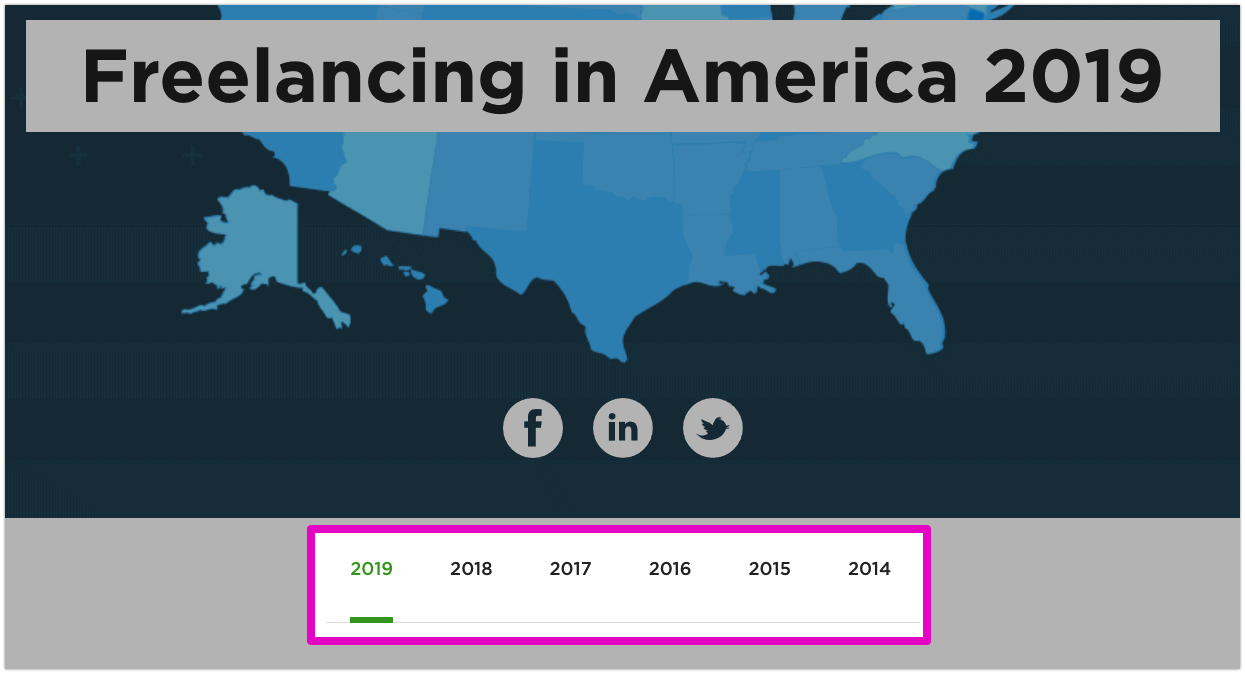
(Actually, last year Upwork re-named their annual report to “Freelance Forward” and changed the main URL for that reason. But I’m sure they’ll again start linking from the main version of that report to past versions as they become available.)
8. Set S.M.A.R.T. Goals
Different topics and types of content produce different outcomes.
Want to attract backlinks to improve your Google rankings?
Then data-driven content is a great bet.
Want to help your sales team close more leads?
Then a case study would be better.
That’s why it’s important to have a specific goal for your content. Otherwise, you’re unlikely to get the results you want.
The best goals are S.M.A.R.T.:
Specific, Measurable, Achievable, Relevant and Time-bound.
Specific: exactly what goal you want the content to achieve. For example, a specific number of leads per month, a certain amount of revenue, or a number of backlinks.
Measurable: the goal should be quantifiable. (Bad = “increased revenue”. Good = “$5,000 per month in product sales from traffic to this report”.)
Achievable: the goal should be realistic.
Relevant: the goal needs to matter for the business. Site traffic alone is usually a bad goal. Better would be email newsletter sign-ups. And better yet would be actual sales or revenue.
Time-bound: set a deadline for when the goal should be met. Whether that’s the week after publishing or several months later. Add your S.M.A.R.T. goal deadlines to your editorial calendar so you know when to check back.
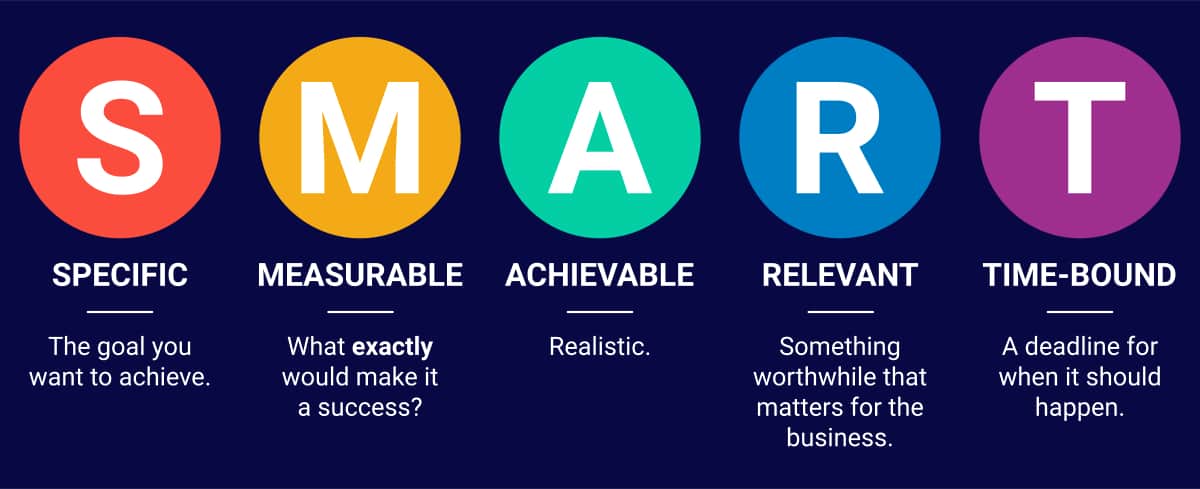
For example:
My goal for this blog post is to bring in 30 new email subscribers per month from organic search by December 1st.
When December 1st rolls around, I’ll do a simple content post-mortem to check how it’s going.
That will tell me if the content is performing as expected, or if I need to change something to get it on the right track.
9. Use an Editorial Calendar
This is the most boring content marketing tip on this list.
But it can make a big difference.
That’s because an editorial calendar (or content calendar) is the best way to stick to a consistent publishing schedule. Which in my opinion is one of the keys to success in content marketing.
Your calendar can be as simple as a Google Sheets spreadsheet. Or you can use purpose-built software like CoSchedule.
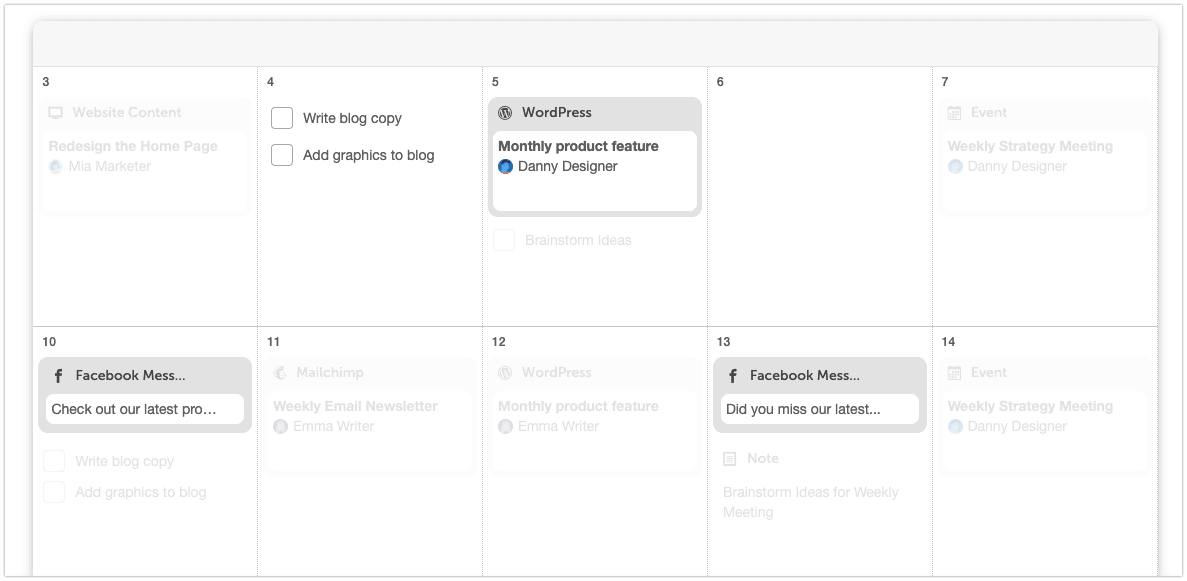
Here are a few editorial calendars I recommend.
Editorial calendars are extra important for larger content teams as a way of organizing the content creation process.
Especially if you break out separate sub-deadlines for each aspect of content production and promotion.
For example, you want to have the final content review and approvals done at least a few days before the publication date.
Naturally, writing the actual content and adding any multimedia would need to happen before that.
And the due date for the content outline would be even sooner.
Creating a sub-deadline for each aspect of your content development process is a great way to help your team stay on track.
10. Land and Expand
If you have a limited amount of time and budget, it’s best to start with a narrow focus.
Specifically, it’s a good idea to focus on one or two main content distribution channels before expanding to others.
Why?
Getting traction in any marketing channel takes time.
Whether that’s getting your blog posts to rank on Google, building up YouTube subscribers, or attracting followers on Instagram.
Any one of those takes a lot of work.
But once you hit a certain tipping point, getting results becomes much easier. It’s like riding a bike to the top of a hill and then back down the other side.
In GrowthBadger’s case, the main traffic source I’m focusing on is SEO. And on the side, I’m also building an audience on Twitter.
I’d love to expand to other channels and content types like YouTube, podcasting, LinkedIn and TikTok in the future.
But I know I’ll get better results by building up my SEO traffic and Twitter followers first. And then I can use those assets to expand to other channels.
There is one exception to the “Land and Expand” rule:
Email.
In my opinion, pretty much every business should have an email list. That’s because email marketing drives a higher average ROI than any other marketing channel, at $36 for every $1 spent.
Plus, your email list is portable. So no one can shut off your access to your email subscribers overnight. (Unlike SEO and social media.)
But other than email, it’s usually best to focus your efforts on getting traction with just one or two marketing channels before expanding to others.
11. Save Time with These Tools
There are lots of tools that can save you time by shortcutting manual processes.
And if you’re on a shoestring budget, there are plenty of free and cheap options.
Here are a few of my favorites:
Typefully is an excellent way to draft and schedule tweets and Twitter threads. Even its free tier is really good.
My favorite feature of Typefully is the preview pane. As you write your thread on the left, the preview pane on the right shows exactly how it’s going to look when published. Including images.

Another tool I use all the time is Wordable.
Wordable quickly imports blog drafts from Google Docs into WordPress.
It removes all the weird formatting issues that can happen with a simple copy and paste. And it also lets you apply “transformations” in bulk: things like adding image alt text and making your links open in a new tab.
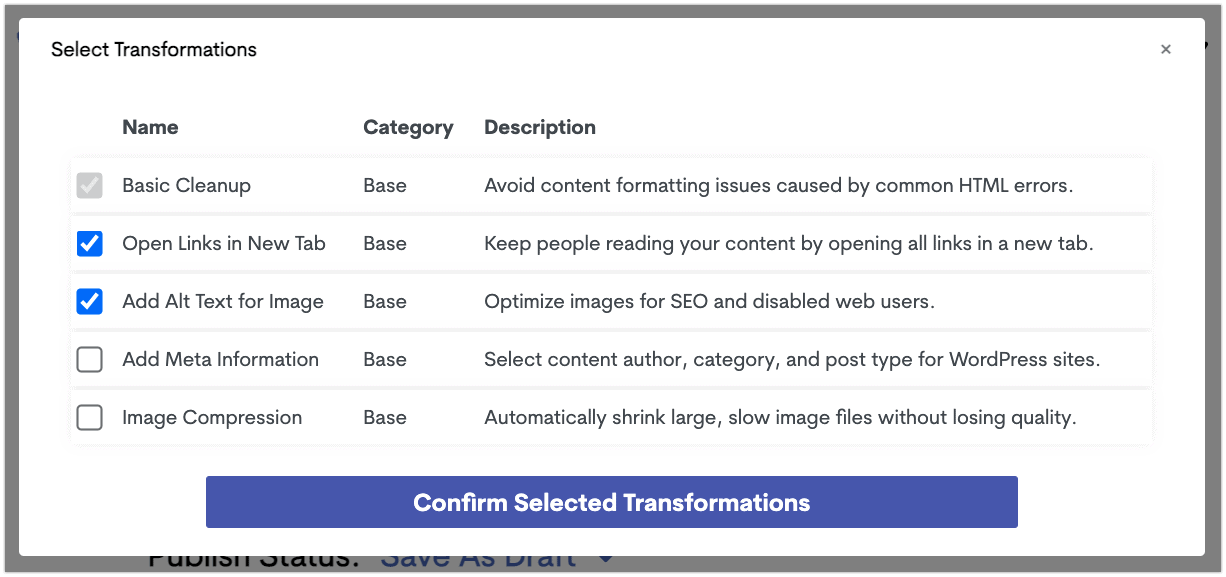
And the last tool I’ll mention is Google Docs voice typing.
I’m a pretty fast typer.
But I’ll never type as fast as I speak. Especially when I’m stuck and just need to get started. (There’s a reason it’s called “writers’ block” and not “speakers’ block”.)
Besides, there’s something magical about seeing a blank page fill up with content as you talk.
To use voice typing in Google Docs, go to Tools >> Voice typing.
Then click the microphone button and start talking.
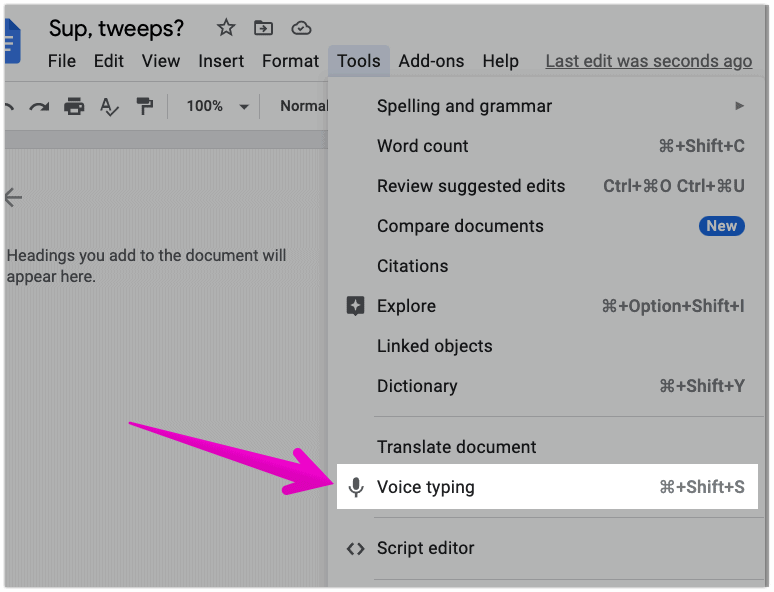
For more content marketing tools, check out my guide: 73 Useful Content Marketing Tools (Reviewed with Screenshots).
12. Educate, Don’t Sell
This tip is going to be obvious to seasoned content marketers. But it’s critical.
The vast majority of your content should be geared toward helping prospective customers. Not directly selling to them.
Think about it:
When was the last time you actually wanted to read through a company’s sales materials?
The point of most of your content should be to:
A) Build trust, and
B) Gradually nudge people toward the next step in your content marketing funnel.
Not to make sales pitches over and over again.
Sure, some content should be sales-oriented. Like your product detail pages, service landing pages and email sales sequences.
And there’s nothing wrong with announcing special offers on social media.
But most of the time?
Your blog, social media accounts, YouTube channel and podcast are best for making people familiar with your brand. Selling to them comes later.
13. Tweet When Your Actual Followers Are Active
Want to know exactly when your Twitter followers are most active?
(Not just the average Twitter user, but your actual followers.)
Twitter can show you in the Audience Insights report. Which is inside their free Media Studio tool.
Here’s what my report looks like:

To see your own, sign up for free at studio.twitter.com.
Then go to Insights >> Audience.
Voilà!
Now you know exactly when your audience is most active on Twitter.
14. Give Every Blog Post 3 Different Titles
Did you know that each article you publish can actually have three separate titles?
Using all three will help you get your site visitors more interested, bring in more search traffic, and drive social shares.
I’ll show you what I mean using this BuzzFeed article as an example.
Title #1 is the H1 headline. This appears in big letters on your website itself.
Of the three titles we’ll cover, this one can be the longest.
In BuzzFeed’s article, the H1 headline is:
“I Air Fried 10 Popular Trader Joe’s Foods, And There Were Some Clear Winners”
Here’s how the H1 headline looks on their site:
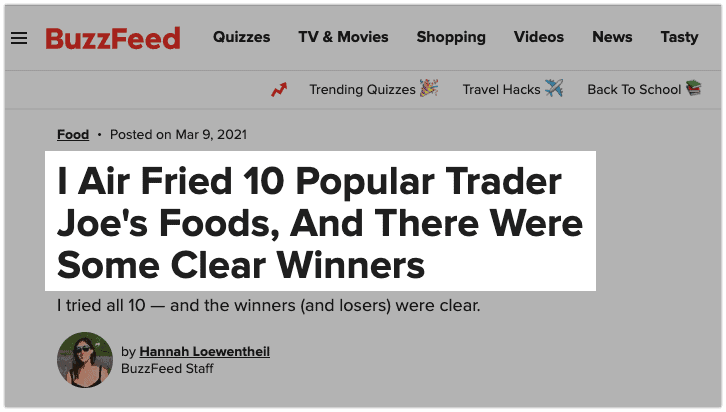
Title #2 is the meta title tag.
The meta title tag doesn’t display on your website. But it shows up on Google as the blue link for that page.
The meta title tag has a big effect on SEO rankings. So it’s important to include your target keyword in it — preferably toward the beginning. But Google usually only displays the first 50-60 characters, so keep it short.
In BuzzFeed’s article, the meta title tag is:
“The Best Trader Joe’s Foods To Make In The Air Fryer”
Here’s how it looks on the Google search results page:

And title #3 is the Open Graph title.
The Open Graph title doesn’t display on your own site, either. Instead, it’s shown when your post gets shared on social media.
Which makes it a good place to use emotion or introduce mystery, which can lead to more shares.
The BuzzFeed article’s Open Graph title is:
“7 Trader Joe’s Foods That Taste Way Better In The Air Fryer (And 3 That Don’t)”
(Notice how it’s just a little more click-baity than the other titles for the same article.)
Here’s how the article’s Open Graph title displays on Facebook:

15. Post Content Summaries on Reddit
Reddit gets 50+ billion monthly pageviews. But as a content distribution channel, it’s still under-used.
(Especially compared to other social networks like Facebook and Instagram.)
Why don’t more content marketers use Reddit?
Simple: redditors love the “downvote” button.
If you come across as self-promotional, you’ll get downvoted into oblivion. And no one will see what you shared.
But I’ve successfully used Reddit to attract tens of thousands of visitors to this blog.
Here’s my secret:
Instead of just sharing a link to my blog post, I write a long “text post” on Reddit about it.

In that Reddit text post, I cover some of the most valuable parts of my original blog post.
If the blog post is an in-depth guide, I’ll write out the major steps on Reddit.
Or if the blog post is an original study, I’ll call out the most interesting findings.
The point is to provide enough value right there on Reddit that people will upvote it and comment — even if they don’t click through to your original content.
And then, at the bottom, you can link back to your content.
You’ll be surprised how many people will visit your site this way.
For example, here’s a text post I wrote on the r/Entrepreneur subreddit a while back.
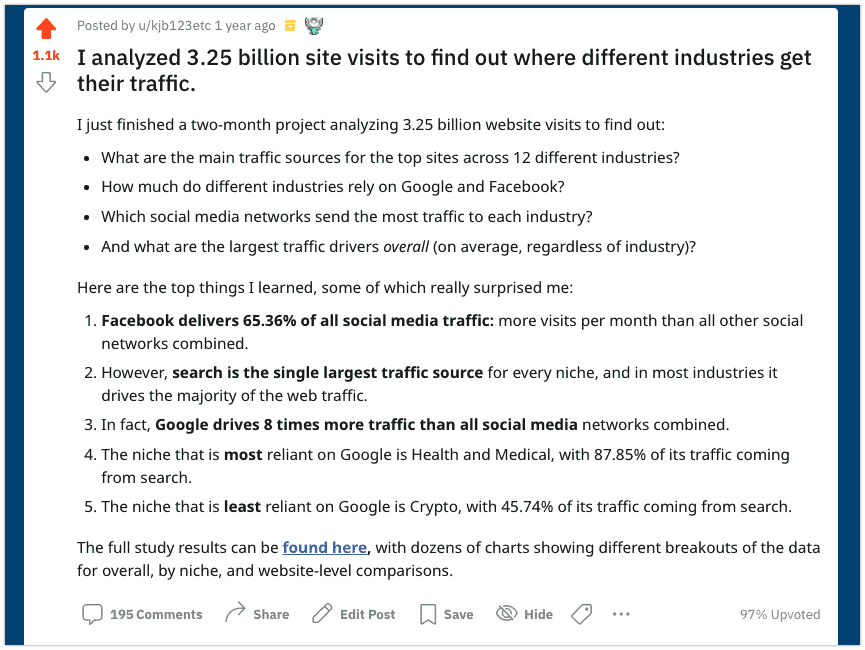
I still get traffic from that Reddit post today. (Even though I “gave away” most of the important information right there on Reddit.)
Posting on Reddit can be a little uncomfortable at first. But once you get the hang of it, you’ll see that this is one of the most powerful content marketing tips on this list.
16. Join Niche Communities
If a niche or interest exists, there’s probably a forum or community out there for it.
Those communities are an excellent way to get exposure for your business.
To find them, just do a Google search search using this format:
“[subject] community” OR “[subject] message board” OR “[subject] forum”
(Replace each instance of [subject] with your niche.)
For example, here are the search results for “woodworking community” OR “woodworking message board” OR “woodworking forum”:
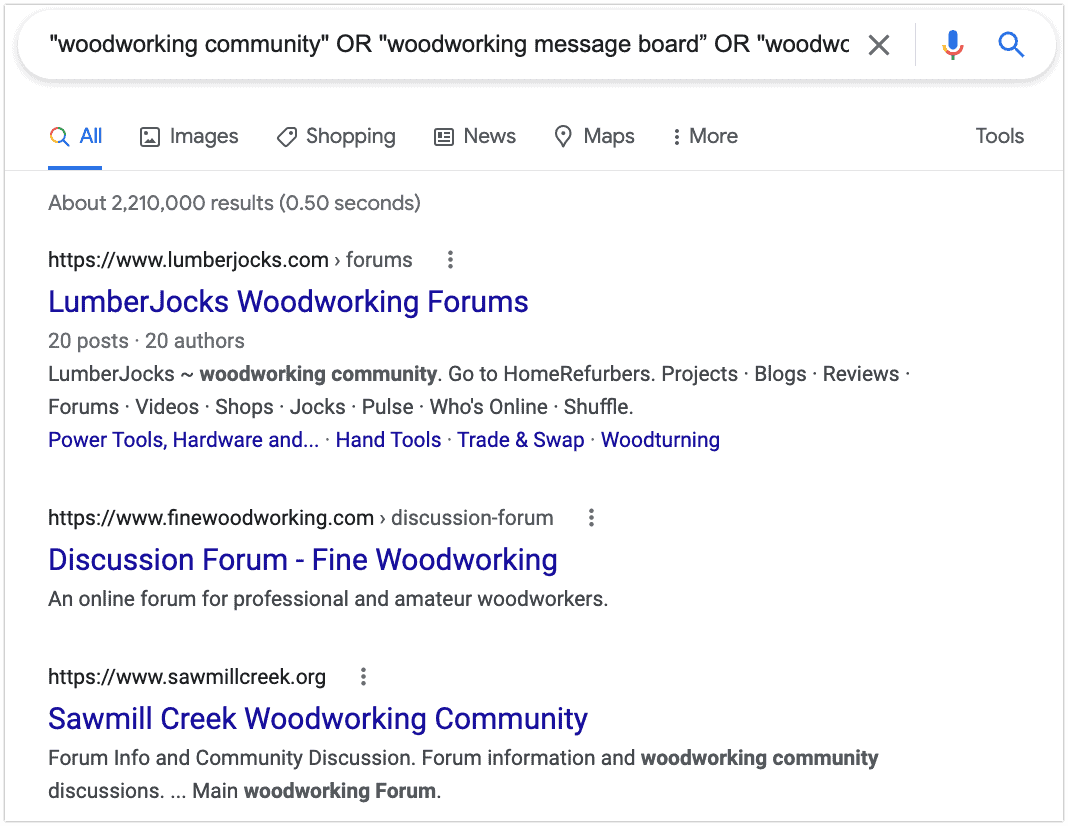
17. Aim For Relevance Over Reach
It’s tempting to try to reach the biggest audience possible with your content.
To go for the big viral hit on social. Or to try to rank for the broad keyword that gets 100k searches per month.
Here’s the problem:
That traffic isn’t targeted. Those people aren’t interested in what you sell.
Overly broad content might bring in visitors. But most of the time, it won’t move the needle for your business.
So what should you do instead?
Focus on creating content that your ideal customers would be interested in.
For example:
- Teach them something related to what you do.
- Help them solve a common problem.
- Or show off your expertise in an entertaining way.
And from an SEO standpoint, here’s another thing you can do:
When researching keywords, look at the average CPC (cost per click).
A higher CPC usually means those people are more interested in making a purchase. Since advertisers are paying more to reach them.
You can see that pattern in the screenshot below.
The keyword “social media” gets 200k searches per month with an average CPC of $2.50. While “social media marketing agency” only gets 7.5k searches per month — but it has a CPC of $19:
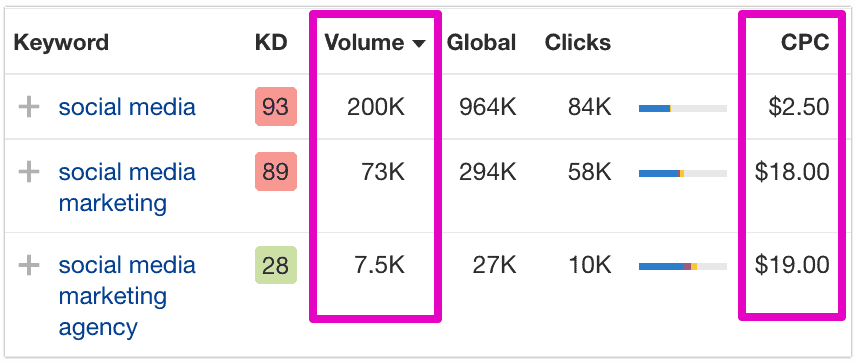
So if I ran a social media marketing agency, I’d focus a lot more on the lower-volume, higher-CPC keywords.
(Those keywords also have less competition, by the way.)
18. Draft 10 Headline Ideas for Each Piece of Content
Ernest Hemingway said: “The first draft of anything is shit.”
And yet, lots of content creators just write one headline idea. And with a small tweak or two, they call it good.
The fact is, the headline is a huge part of what convinces people to read, watch, or listen to your work. So it’s worth taking some extra time to get it right.
That’s why I recommend writing not one, not two, but ten different headline ideas for each piece of content you produce.
If you do that, half of them will suck.
And a few more will be only so-so.
But at least one or two will be really, really good.
Struggling to come up with headline ideas?
For inspiration, check out AllTop.com.
It’s a website that shows the most popular articles that are trending online.
You can look at the homepage, or click on one of the categories at the top. For example, Tech or Business. (It doesn’t have to be your industry.)
Then, look at the titles of the articles you see. And use the same format for your headline.
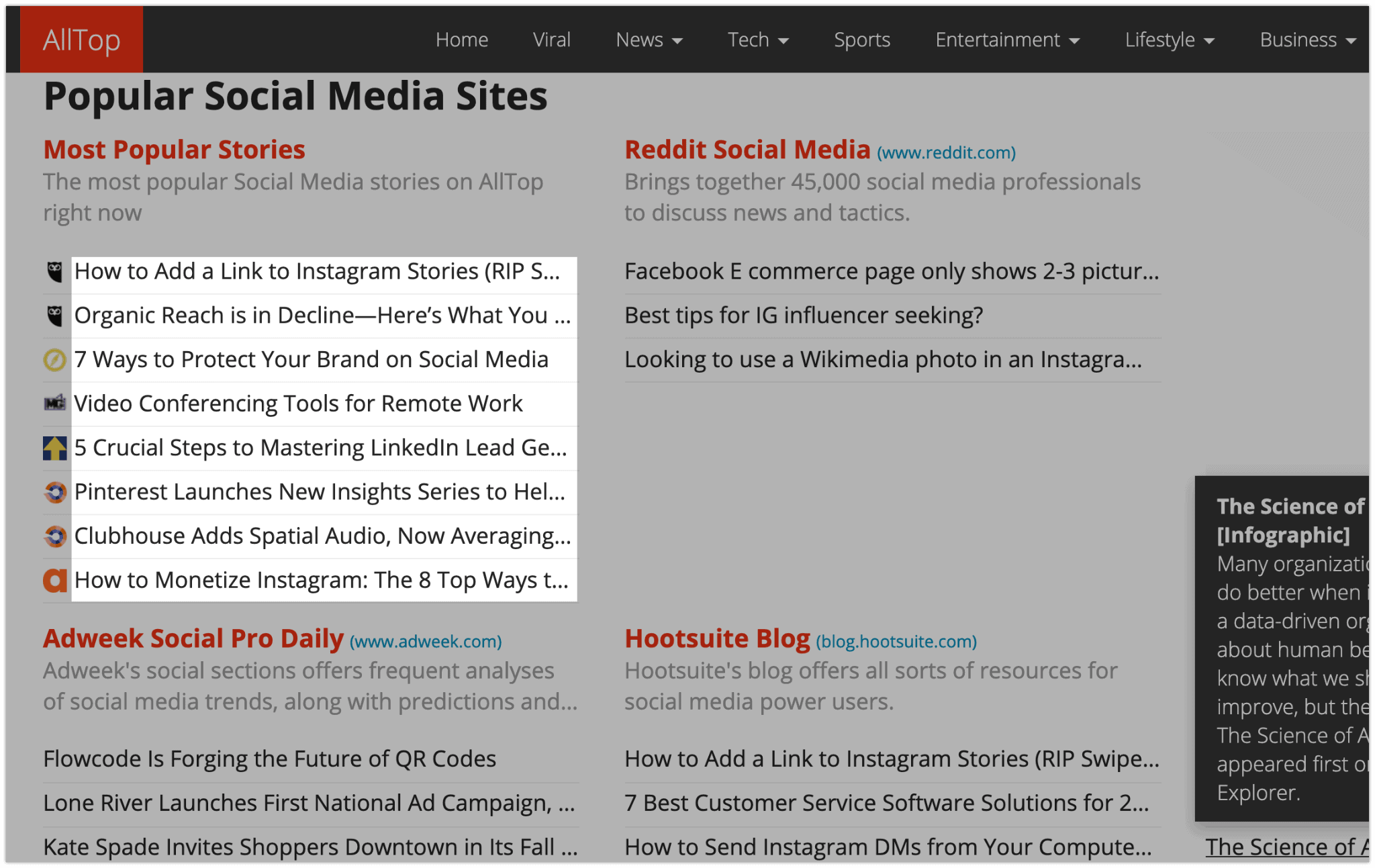
19. Create A Free Tool
People love free tools.
They love to use them, to talk about them on social media, and to link to them.
In other words, free tools are one of the best content marketing methods around.
That’s why so many SaaS businesses use a freemium pricing model. For example, Canva, Moz, and Later.com. Once the main paid tool is created, it’s relatively simple to offer a limited free version of it.
But free tools aren’t just for SaaS businesses.
Lots of companies create free tools solely for marketing purposes, with no plan to ever charge for them. Like the Detailed SEO Extension, for example.

If you don’t have the resources to build something like that, don’t worry.
Your free tool doesn’t have to be that advanced.
It could simply be a:
- Google Sheet, like this one from HubSpot
- Template for another tool, like this Notion template from Buffer or this Google Data Studio template from Aleyda Solis
- Short online course, like this cooking class by Veecoco
Or even just an interactive listicle, like my resource of content marketing examples.
20. Publish 10x Content
“10x content” is content that’s 10 times better than any other content that’s been published on that topic before.
That can mean a lot of things:
- More in-depth (7,000+ word articles get 4x as much traffic as shorter articles)
- Written more clearly
- Designed better
- More interesting or entertaining
- Better researched
- More actionable
- Addresses search intent better
The point of 10x content is to make a big impact. So that anyone who sees it will say “this is awesome!”
A perfect example is this guide to Zoom presentations on Be The Keynote:
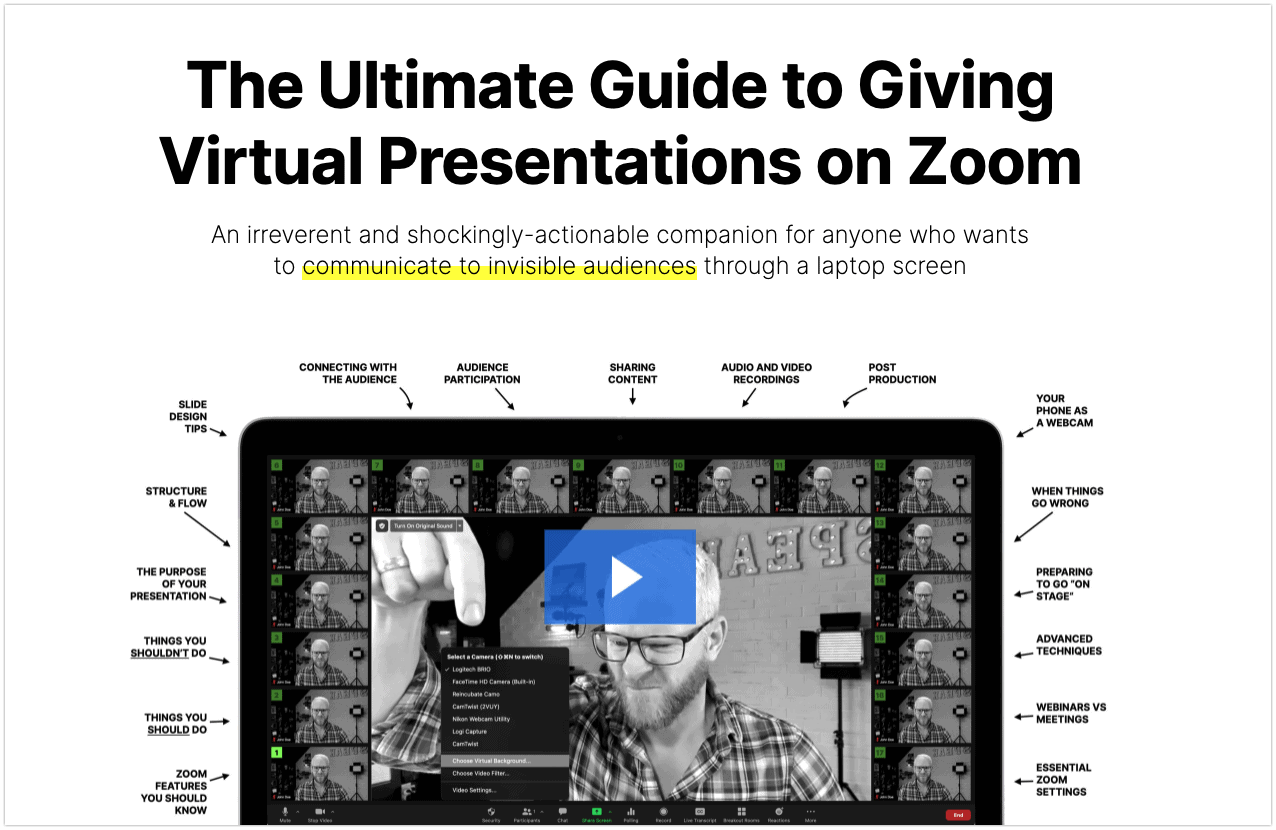
This guide was only the second post ever published on the Be The Keynote blog. But it contains 29,584 words of text, plus 84 screenshots and more than 10 instructional videos.
It truly covers every aspect of running a virtual presentation on Zoom.
And it’s really, really well structured and designed.
As a result, it quickly picked up hundreds of backlinks and social shares. And people are still talking about it.
All because it was true 10x content. Not just another average blog post.
You may not have the time or resources to make all your content 10x content. And that’s okay. In that case, I’d focus on evergreen content that you know will relevant for a long time. If you can make some of those pieces 10x content, you’ll reap the rewards for years to come.
21. Run a Viral Giveaway
Giveaways are a great way to grow your email list quickly.
Here’s one I ran a couple years back that brought in over 300 subscribers:
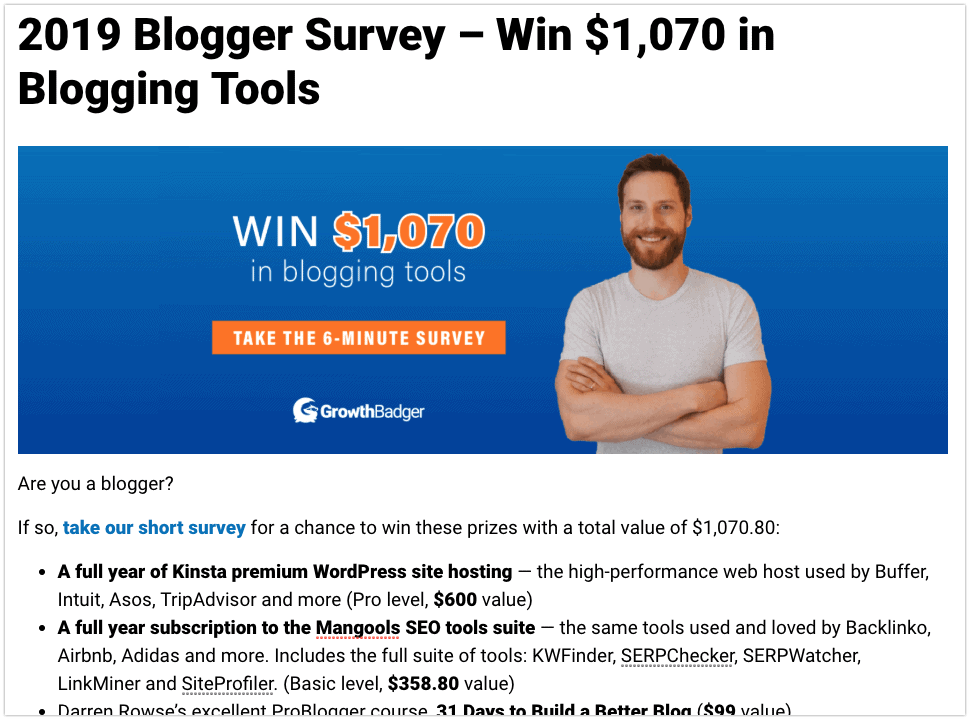
The thing is, that was just a traditional giveaway.
You can get much better results with a viral giveaway.
A viral giveaway works by giving people more chances to win when they share the giveaway with their friends. So each entrant is incentivized to bring in even more entrants.
And it’s easy to create one using a tool like UpViral or KingSumo.
Here’s how one made with UpViral looks:
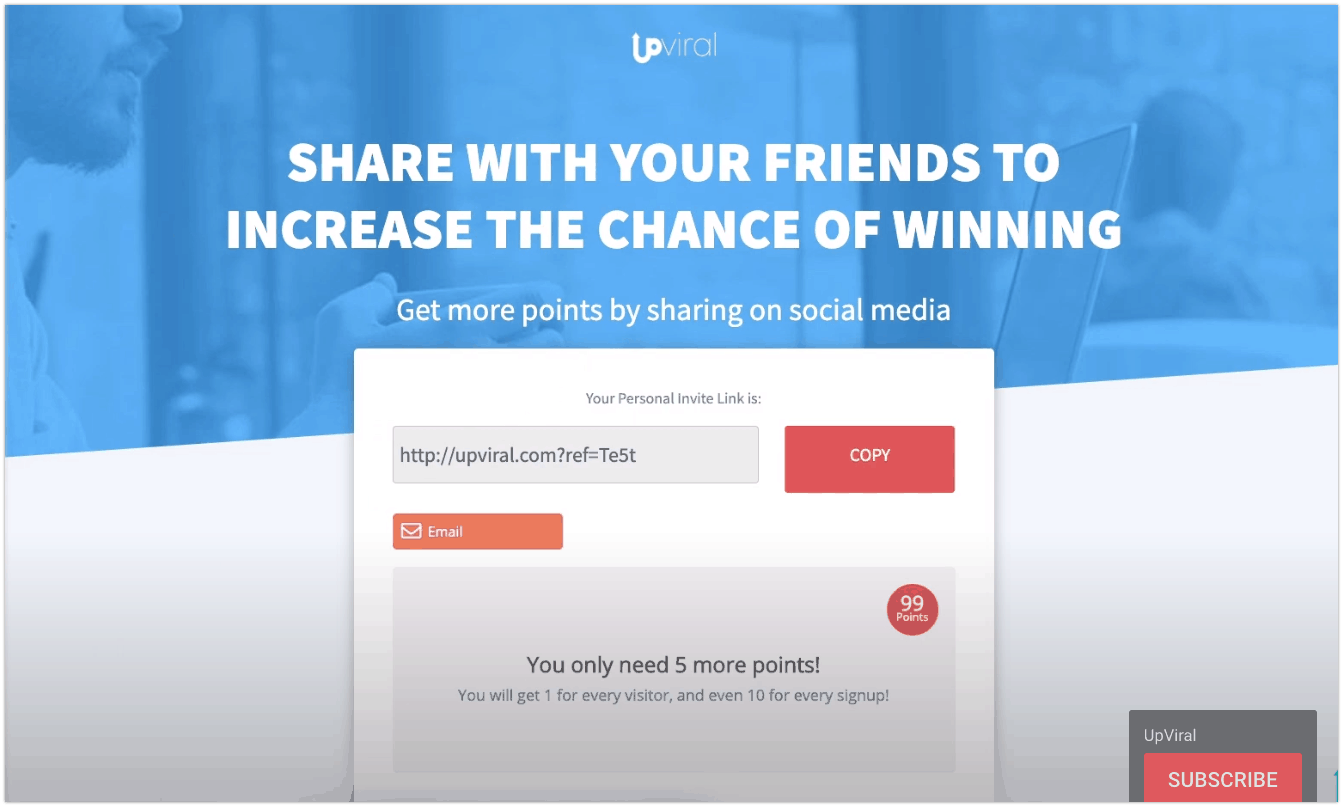
One piece of advice:
When you run a giveaway, choose your prize carefully. Don’t offer something that everyone will want, like an Amazon gift card or an iPad.
It’s better to offer something that only your prospective customers would be interested in.
If you run a gardening store, then free gardening supplies would be perfect. Or a popular gardening book and a gift card to your store.
That way, you’ll know that any email subscribers you get from the giveaway are potential future customers. And not just random freebie-seekers.
22. Uncover Hidden Opportunities with Google Analytics
A little while ago, I tweeted this:
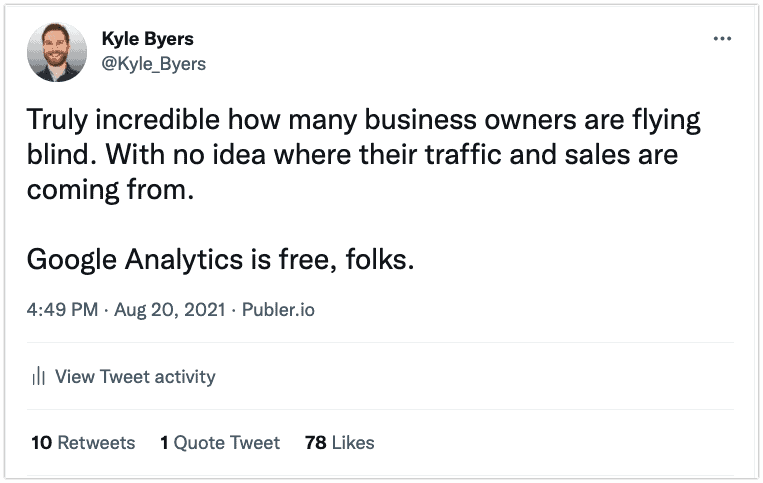
A number of people responded with comments like this:

Google Analytics is 100% free. But there are still millions of websites that don’t use it.
And in my experience, it tends to be underutilized even when it is installed.
So here are three reports I recommend for every content marketer or content creator.
Report #1: The Landing Pages report.
The Landing Pages report will show which pieces of content are bringing in the most traffic to your site. As well as the most conversions.
It’s also a great jumping-off place to see other key data, like where that traffic is coming from.
To access it, in the left-hand menu go to Behavior >> Site Content >> Landing Pages.
Here’s how the Landing Pages report looks. It shows the number of sessions (visits) to each page. As well as other important information like bounce rate, average session duration and conversions.
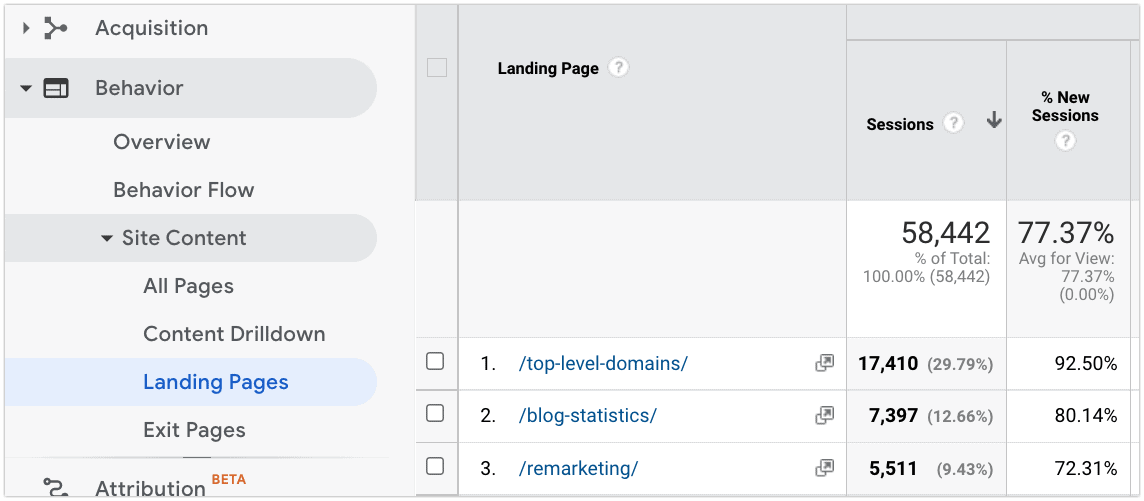
From there, you can dive into the traffic details for any specific piece of content.
Just click on the content’s blue link. Then change the “Primary Dimension” option above to “Source”.
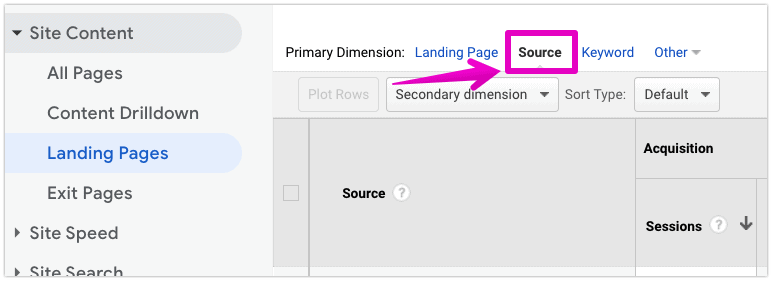
That will show you the traffic sources of that page.
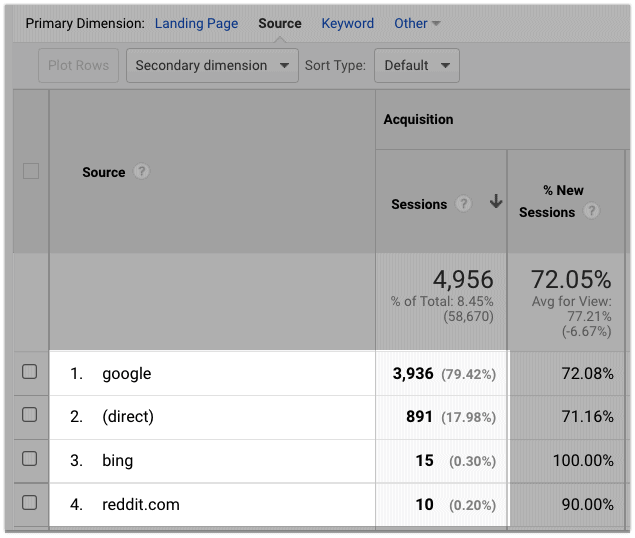
And if you scroll to the right, you can see how many goal conversions each traffic source is driving for that page.
(Don’t have goal tracking? Here is Google’s guide to setting it up.)
Report #2: The All Traffic report.
What if you want to take a step back and look at all your site’s traffic sources? Without clicking through each individual landing page.
That’s what the All Traffic report is for.
You can access it by going to Acquisition >> All Traffic >> Source/Medium.
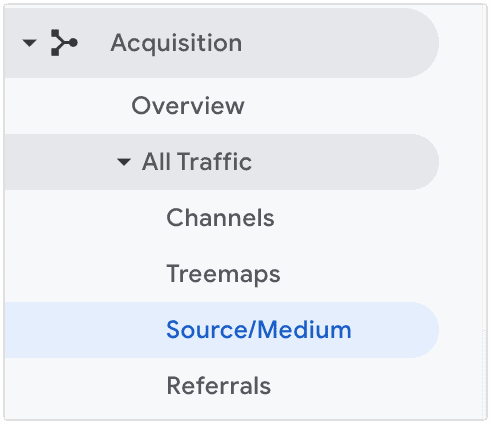
Here’s what the All Traffic report looks like. Again, you can see it has goal conversions on the far right:
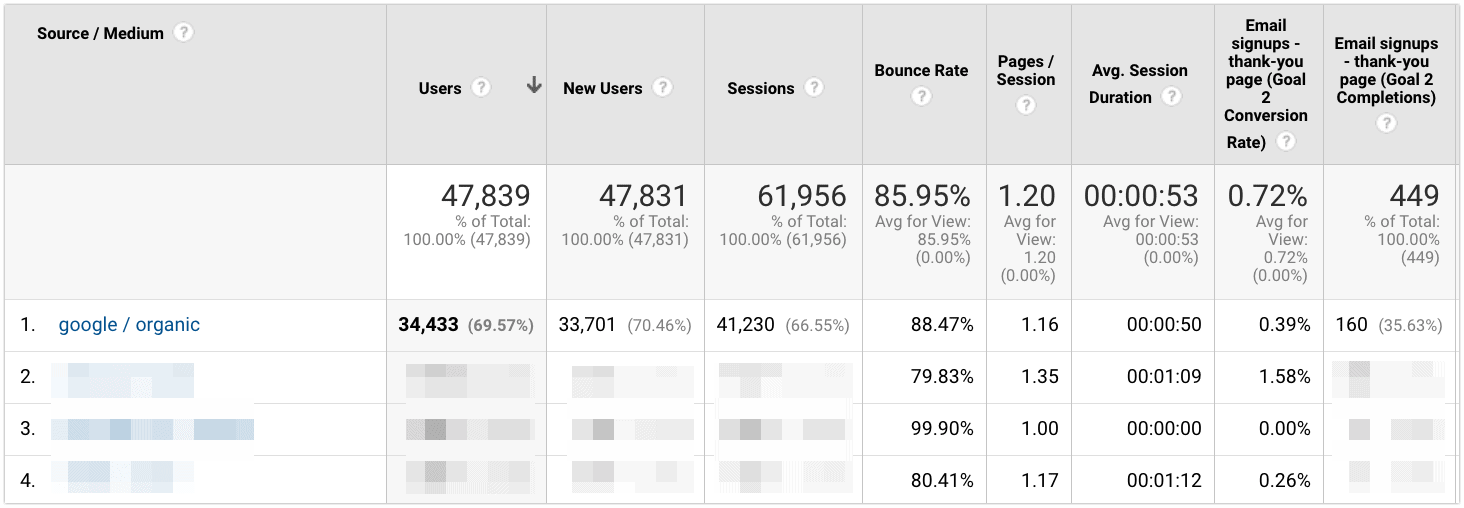
Report #3: The Reverse Goal Path report.
Some content is great at converting traffic, but not so good at generating it. Like case studies, for example.
While for other content, it’s the opposite. Like listicles, which are generally top-of-funnel content.
The Reverse Goal Path report shows how people move through your website before ultimately converting.
In other words, it lets you see how your content marketing funnel works.
This is the most advanced report of the three I’ve mentioned. But don’t worry, it’s still pretty simple. People just don’t use it often enough.
To access the Reverse Goal Path report, go to Conversions >> Goals >> Reverse Goal Path.
Here’s what it looks like:

“Goal Completion Location” on the far left shows the page people actually converted on. While “Goal Previous Step – 1” shows the page they were on right before that.
“Goal Previous Step – 2” shows where they were two pages earlier. And so on.
Now that you can see how your pages are helping each other, you can modify the content to make the connection stronger. Or publish additional pieces to fill any gaps in your funnel.
23. Repurpose Your Content
What’s the fastest way to create new content?
By repurposing old content.
For example, do you have a podcast?
A tool like Descript, Rev or even Google Docs voice typing can automatically create a transcript for any episode.
Then, just edit the transcript a little and publish it as a blog post. Boom, two pieces of content for the price of one.
You can also take short clips of the episode and post them on social media using Wavve.
Or publish the audio on YouTube as well.
More content repurposing ideas:
- Turn data-driven content into SlideShare presentations and Instagram carousels
- Publish shorter clips of long YouTube videos as separate videos
- Distill blog posts into Twitter threads
You can also add your best social posts to your long-form content.
For example, a while back I posted this content marketing tip on my Twitter account:
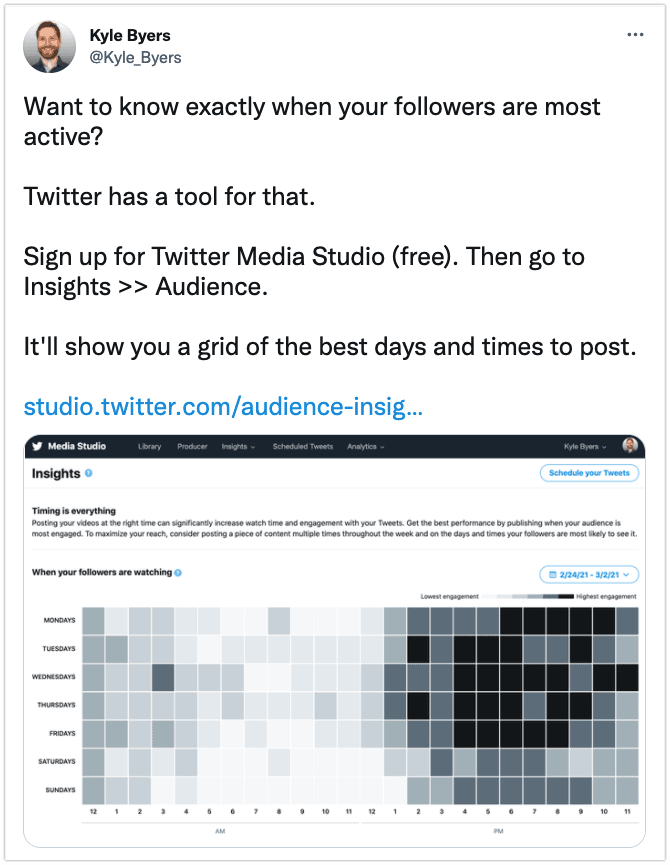
That tweet performed well, so I’ve included the same tip in a couple of different blog posts since then. Including this one.
24. Write for “F-Shaped” Reading
According to an eye-tracking study by Nielsen Norman Group, people tend to read content in an “F-shaped” pattern.
Here’s an image with three examples from the study:

The study showed that people’s eyes start at the upper left of the page and move to the right.
Then they jump down a bit and scan to the right a few more times.
Then as they scroll down farther, people only look at the left side of the content. Skimming for something enticing to latch onto.
(Based on a follow-up study, this same pattern occurs on both desktop and mobile devices.)
Which means:
Your 1st paragraph is key.
The 2nd paragraph is also critical.
But by the 3rd paragraph, 90%+ of your writing is effectively invisible. (Unless you’ve really hooked the person.)
So lower down in your content, try to use key terms your readers care about in the first 1-2 words of your subheadings, paragraphs and bullet points. Or if those terms are buried inside paragraphs, try adding bold to make them jump out.
Or you can make your paragraphs very short and easy to scan. Like this one.
Those adjustments will help grab your audience’s attention and get them to keep reading.
Wrapping Up
And that concludes this list of content marketing tips. I’d love to know what you thought.
Do you have a favorite tip from the list?
Or is there another tip you think I should include?
Leave a comment to let me know.


Actually I’m interested in the 10x content technique. Only, there is a curious question. Why not 5x content or 15x content. Does the number 10x have an explanation?